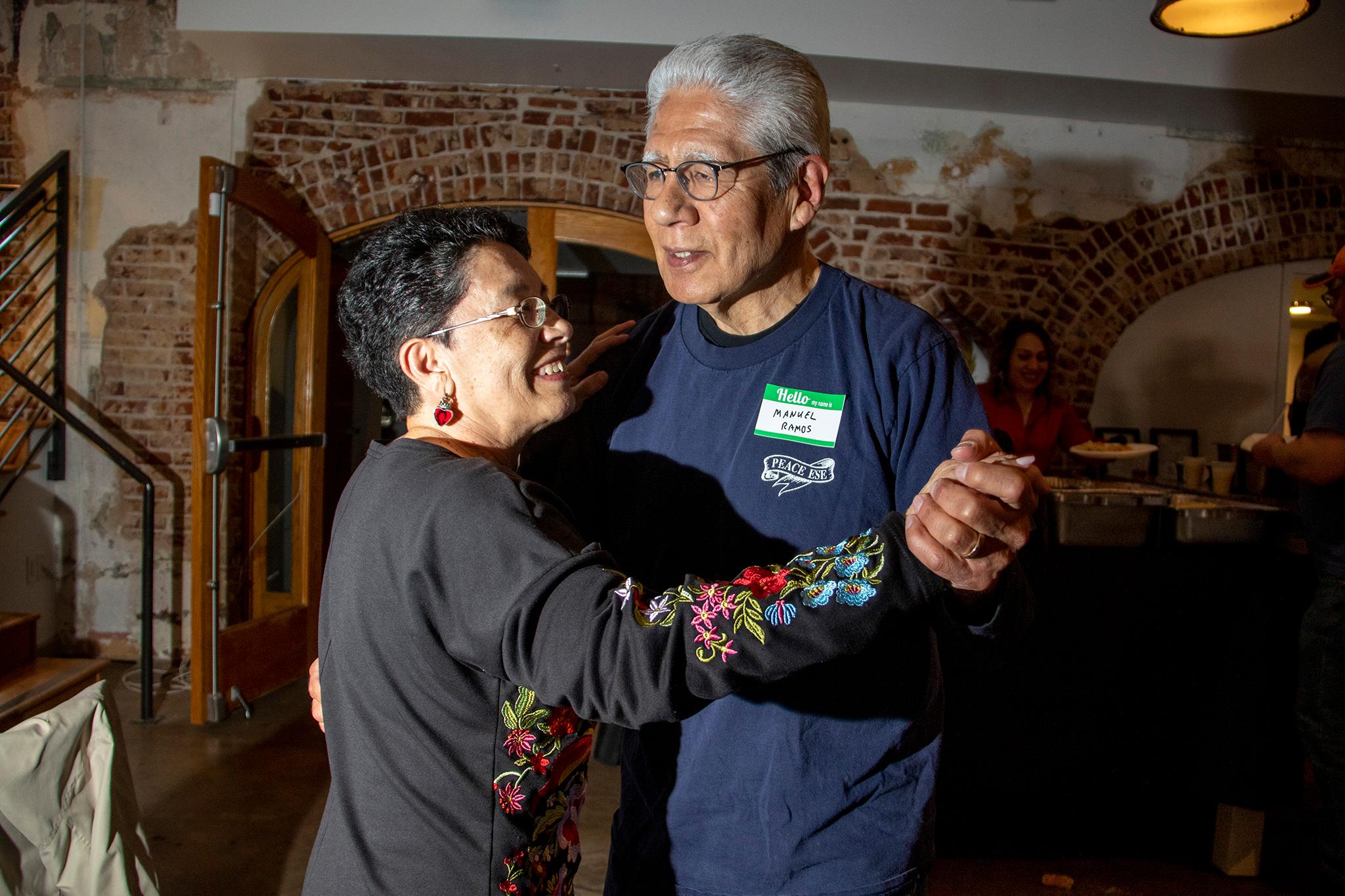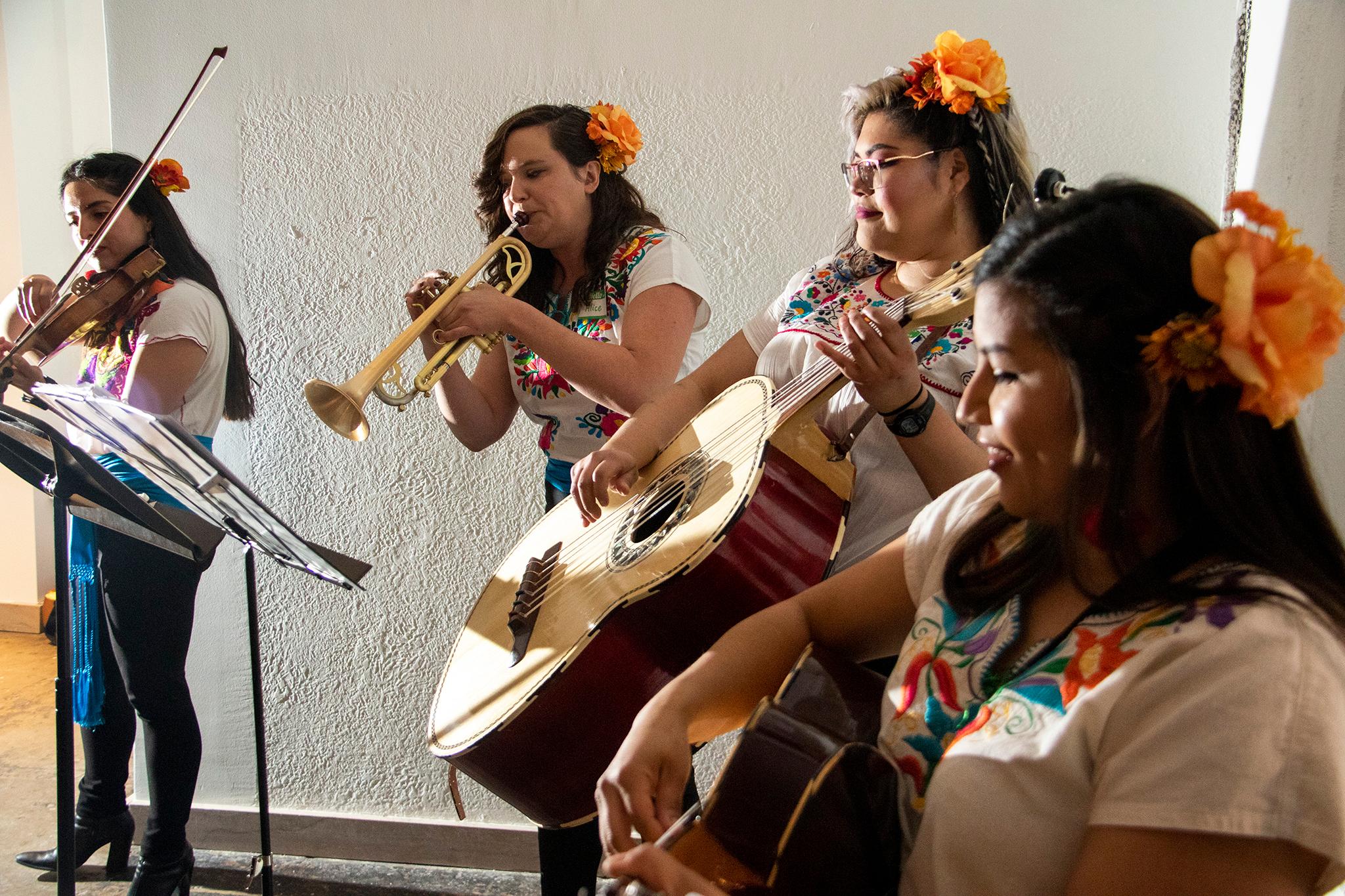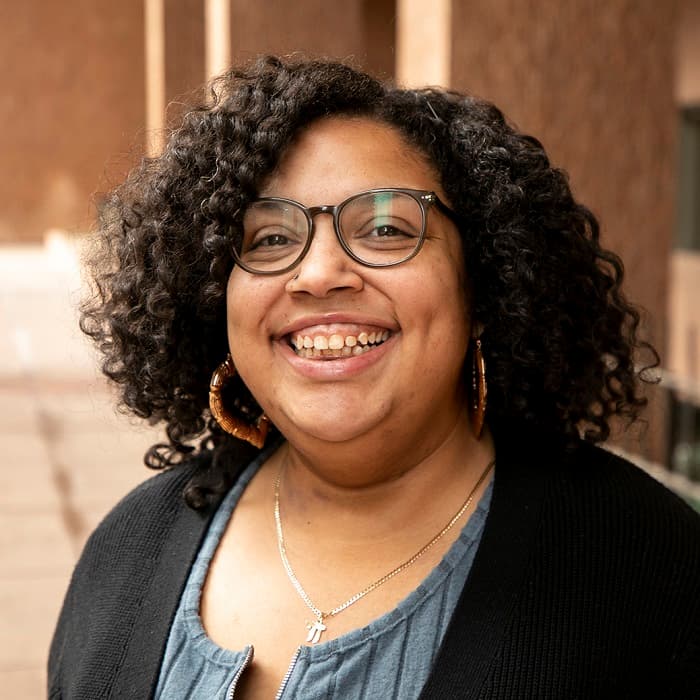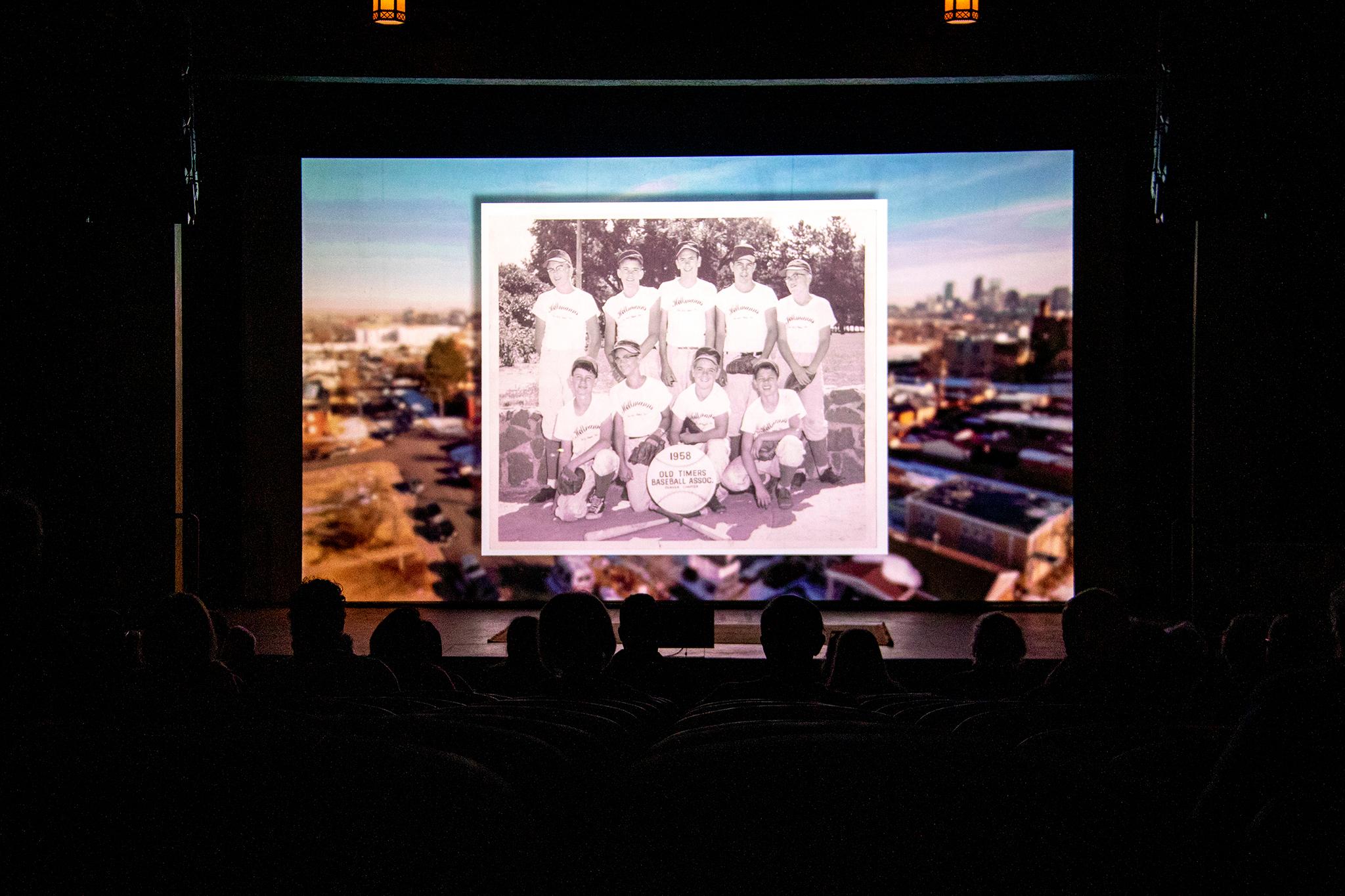On the big screen at the Holiday Theater, Ricky Ramos remembered being at his grandma's house in the Quigg Newton Homes listening to the bells of the paleta man, pushing his cart over the summer to sell sweet treats and elote.
Sitting in a booth at Carl's Pizza, current owner John Ludwig pointed out the window recalling when the pizza joint's original owner Carl DiGiacomo would pull up to the front in his Cadillac coupé de ville, how police sat and ate in the front of the house while mafiosos played cards in the back.
Flo Hernandez-Ramos spoke about an average day, which included visiting panaderias on West 32nd Avenue in the morning, going to The Holiday Theater to watch a Mexican movie or listen to Mexican artists sing in the afternoon and later heading to Our Lady of Guadalupe Church in the evening to hear César Chávez speak.
Over the last 10 months, folks like Ramos, Ludwig and Hernandez-Ramos, with a connection to the Northside, whether that be past and current residents or newcomers, gathered to share the stories of those connections in an effort to remember and memorialize their slice of Denver.
As Hernandez-Ramos previously said, "History depends on who's telling it, and whoever tells it, is what is remembered."
All of these stories, along with hundreds of pictures, are a part of History Colorado's Northside Memory Project.


The project is part of History Colorado's Museum of Memory Initiative, which focuses on curating history from underserved or disappearing neighborhoods through photos and recorded stories of residents who either once lived there or currently live there.
The Initiative has worked on projects in Five Points, Globeville and Elyria-Swansea. It's also currently collecting memories in Auraria and Sun Valley.
Saving those memories has become vital for the North Denver region, said Gail Marcus, who grew up in West Colfax and attended North High school as a bused student.
Marcus is now Vice President of the North Side High School Alumni Association and was a part of Memory Project.
"I drive through the neighborhoods that I lived in for so long and it hurts to see the changes," Marcus said. "But that's what happens, so it's really important that we hold to the heritages that we all have lived with."

What is the Northside? is a question often asked by newcomers to Denver and even by some long-term residents.
The definition changes for some, but generally speaking, North Denver consists of the Berkeley, Chaffee Park, Highland, Jefferson Park, Sloan's Lake, Sunnyside and West Highland neighborhoods.
These neighborhoods are rich in history and culture, but they're also the nexus of displacement.
With each closure, demolition and relocation of businesses, homes and people, the history gets chipped away at and those pieces are lost.
Manuel Ramos, who worked on the project said, "It can be very traumatic for somebody who grew up in this neighborhood or lived in this neighborhood for decades like we had, when you see that the history of the neighborhood is being forgotten, that diverse culture that we talked about before, the activities that were going on, the community nature of the neighborhood... all of that is slipping away."
So how can that be prevented? History Colorado believes recording the old stories and showcasing them will keep the past alive.
Those preservation efforts came through different workshops, according to Marissa Volpe, History Colorado's Chief of Equity and Engagement and lead on the project.
History Colorado held several events, mainly at North High, where folks came with stories to tell and pictures to share
There were memory jogging exercises, folks drew pictures of their homes or what things used to look like. Next, Volpe said, participants were invited to an open mic where they reminisce on old establishments and haunts. Many of those places were food-based such as Chubby's, Carbone's Meat Italian Deli or Carl's Pizzeria.
In early April, the project reached its "end" with a celebration at the Holiday Theater, a staple of the Northside.


Volpe said the goal with each project is to always close in a way and in a place that represents the community.
The Holiday Theater, along with North, is a safe and secure space for many Northsiders, so having the party there was definitely sentimental. Volpe added that people can still share stories and photos about the Northside with History Colorado, so the project will never really be over.
"We need a ritual to close," Volpe said. "We're not saying we're done, goodbye forever. But we've been together for 10 months, here's our moment to celebrate...Every Museum of Memory has a culmination...and they each have a different kind of cadence to them.
The event started off with a breakfast buffet, along with the music from Mariachi Las Dahlias. After everyone ate their fill, History Colorado presented a documentary encapsulating the community's effort in preserving their history, "A Love Letter to the Northside."
The film covered the neighborhood's cultural history, the large Italian and Jewish population, mixed in with a small Japanese population, to the large arrival of Latinos and Chicanos in the '60s, '70s and '80s. It explored about how these communities blended together by being working class, family-orientated and religious.


Religion played a big part in the Northsides identity.
"There are three Catholic churches within a few blocks from each other...there's Mount Carmel, St. Patrick's and Our Lady of Guadalupe. The three Catholic churches catered to different aspects of the communities as it existed at that time," said Manuel Ramos, in the film.
St. Patrick Mission Church has served the Irish since 1907, Our Lady of Mount Carmel Italian Catholic Church continues to serve the Italian population and still hosts a service in Italian, Our Lady of Guadalupe also continues to serve the Latino community with services in Spanish.
Then there was a tribute to North High, where everyone in the Northside converged.
Film narrator, longtime resident and "fierce advocator" of North High, Joe DeRose said, "North is the rock of the neighborhood. It is the high school that everybody feeds into."
Marcus added, "Everything at North was a kaleidoscope of colors and attitudes and religion and we all got along."


The film also delves into the Northside's role in the Chicano Movement. It was home to the movement with gathering places like Our Lady of Gudalupe and La Raza Park.
At the end, Darold Vigil or "Pocho Joe," the host of La Raza Rocks on KUVO, sat down with John Devine, a newcomer to the area. The two met to discuss the history of the area and how it is important for new residents to immerse themselves in that history before making new history.
"At the end of the movie when I was talking to [John], I think you truly understood that when you're new to a neighborhood, it's important for you as a newcomer to learn about the neighborhood you're moving to," Vigil said. "It's two-parts. Us to help people learn that history and the newcomers have to have a thirst for that history and that knowledge and that sense of people."
That connection is a wanted result to the project, Volpe said. The project is meant to preserve the memories of this place while people still remember but it's also about sharing those memories and weaving them into the new ones to come. One of the major complaints about "newcomers" to any city is the potential erasure of what was, whether that be a building or a person.
Creating those bridges to keep the past in the forefront of people's ideas for the future is especially crucial to maintaining the fabric of an area that's hanging on by threads.
"When I was a kid, it was just a neighborhood and we didn't appreciate what we had," Vigil said. "I think many of us took what we had for granted. It's more valuable now that we are seeing that disappearing with new people coming to the neighborhood. These types of projects are invaluable in capturing the history, the memories and we need that historical preservation."












